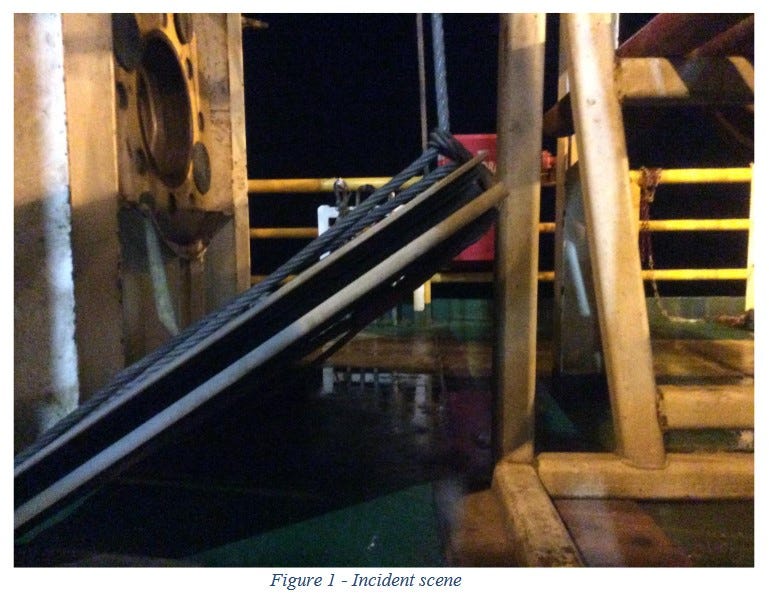BSEE (The Bureau of Safety and Environmental Enforcement) has released a report to do with a fatal accident that occurred in January 2021. Workers were moving some heavy metal plates; the plates broke free from their restraints and pinned the victim, who died from his injuries.
In its investigation BSEE identified three Probable Causes, two Contributing Causes and five Contributing Factors. Many of these causes and factors seem to fall under an overall theme of ‘informal hazards analysis’. For example, the report states,
Seadrill and Allrig personnel did not conduct a written Task Based Risk Assessment (i.e., a JSA), which would have included a step-by-step procedure for the job. It was acceptable under Seadrill’s policies not to use the written TBRA due to the job involving only two people and being (perceived as) low risk. However, the process of writing a TBRA would have highlighted and documented the limited scope of the job, which could have discouraged the Allrig personnel from exceeding that scope by inspecting cable slings outside of the designated area.
Based on the report, it appears that the people involved in this incident considered what they were doing as being part of normal business — they did not see a need to conduct a formal Job Safety Analysis (JSA).
It could be argued that it is not realistic to conduct a JSA on every task. But it is realistic for the people involved to conduct a verbal review before starting the work. The team leader (in this case, the person who died) could have gathered those involved with carrying out the task and discussed what they were proposing to do in a step-by-step manner. At each step he could have asked the simple question, “What could wrong?”





